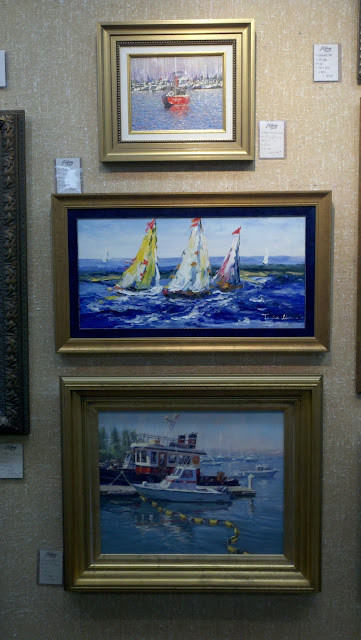Austin, Texas
State Capital Awards
J.R. Mooney Galleries
of Fine Art
"HONORED" AT TEXAS CAPITOL
-----Austin, Texas––(Rep. “Doc” Anderson (R-Waco)/Sen. Leticia Van de Putte (D-San Antonio)) recognized J.R. Mooney Galleries of Fine Art as a Texas Business Treasure on the Senate and House of Representatives floor at the State Capitol in Austin on Jan. 23, 2013.
The distinction from the Texas Historical Commission honors businesses that have been in existence for more than 50 years, and have remained in good standing. J.R. Mooney Galleries of Fine Art joins 41 other businesses from around the state of Texas who share this recognition. Six additional businesses were added to the list on Jan. 23 at the Capitol, the same day J.R. Mooney Galleries of Fine Art was recognized on the Senate floor. ( Making the total count of Texas Businesses to 42).
-“The fact that we are not only a fine art gallery but also a custom framing studio has been a great benefit. The blend of the two together has allowed us to maintain a volume of business that keeps our company going and growing.”
-Mr. Robert Mooney of J.R. Mooney Galleries
Created in 2005 through legislation authored by Sen. Leticia Van de Putte and sponsored by Rep. Charles “Doc” Anderson, the program recognizes well-established Texas companies and their exceptional historical contributions to the state’s economic growth and prosperity.
-“The businesses recognized here today exemplify the reason a company remains successful year after year…Hard work, quality service, and resourcefulness go a long way in the Lone Star State and we’re pleased to recognize those traits.”- Sen. Leticia Van de Putte
A special decal identifying the business as a Texas Treasure will be publicly displayed at J.R. Mooney Galleries of Fine Art. Consumers will know that when they spot the familiar Texas Treasure Business icon, they are doing business with a well-established, Texas-owned-and-operated business that has long contributed to job growth, stimulated the local economy, and generated state and local revenues.
“It is a privilege for us to recognize our long-established businesses that have remained committed to Texans for generations, while creating jobs and stimulating economic growth,” said THC Chairman Matt Kreisle. “May this recognition serve to increase your success and productivity for many years to come.”

-Mr. Robert Mooney of J.R. Mooney Galleries on the House of Representatives Floor
(center)

-Mr. Robert Mooney with Dr. Donna Campbell (R) of Texas Senate

Dr. Donna Campbell in Senate reading Proclamation and award to JR Mooney Galleries

Full List of Texas Treasure Historic Business Awards














































